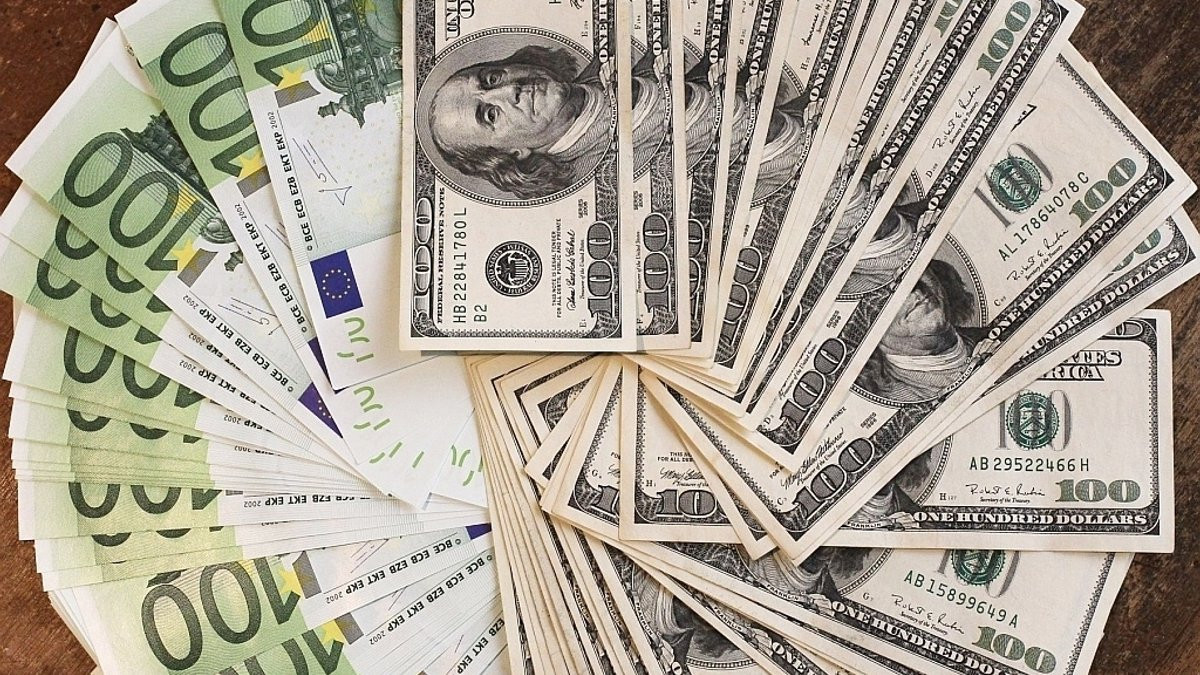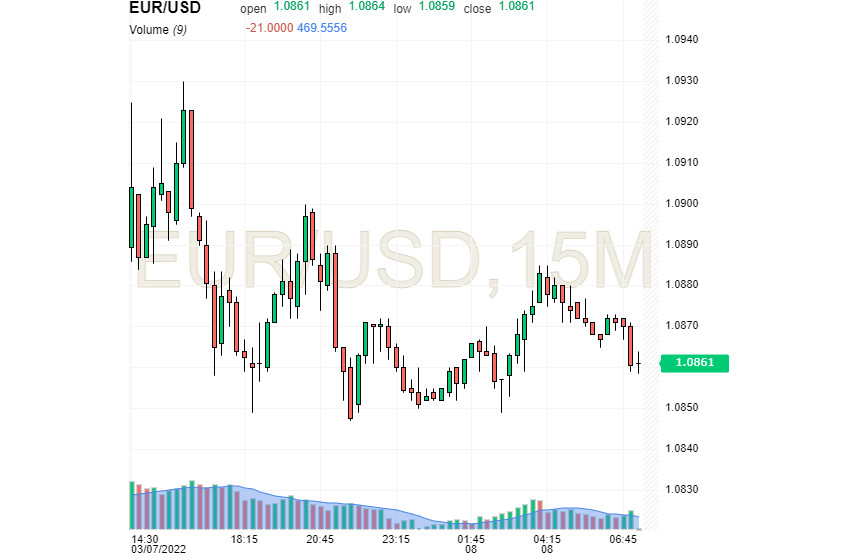
The current week started with a feverish attempt for the European currency to stop the collapse. However, the power of the downtrend is great, causing the euro to lose out to the dollar. Against this backdrop, the greenback is steadily strengthening, outperforming the counterpart.
The fall in the European currency has continued for several days amid the geopolitical stand-off over Ukraine. On the morning of March 8, the euro was near its 22-month low, stuck in this price range. The Ukrainian conflict has worsened Europe's economic outlook, with commodity currencies taking a breather in their weekly rally.
In the current situation, currency strategists at ING bank are forecasting a collapse of the European currency to 1.0500. The reasons are a sharp increase in demand for dollars due to Russia's prolonged military operation in Ukraine and the vulnerability of the European economy. The proximity of a number of EU countries to the conflict zone turns up the heat.
The tense geopolitical backdrop is pushing EUR/USD, which fell to a 22-month low of 1.0824, to test the bottom. In this situation, the euro is like a downed pilot who does not give up despite heavy losses. At the same time, the Euro's recovery could take a long time, experts warn. At the moment, the support level for the EUR/USD is in the 1.0760-1.0770 range. A further slide of the tandem towards 1.0640, the March 2020 low, is likely. In a stressful situation, big numbers such as 1.0500 are relevant, stresses ING.
On March 7, EUR/USD fell 0.5% to 1.0875. Thereafter, the pair was in the current range, trying unsuccessfully to overcome the pull of the downward spiral. On March 8, EUR/USD traded at 1.0861, unable to break out of the downward cycle

Against its European counterpart, the American currency is looking favourable. It has seized the chance for growth and holds the winning position. Positive macrostatistics from the US are on the side of the dollar, which has renewed its 22-month highs against a basket of six global currencies.
According to a report from the US Bureau of Labour Statistics, the number of non-farm jobs increased by 678,000 in February, which was better than forecasts of an increase of 400,000. The country's unemployment rate fell from 4% to 3.8% last month, exceeding analysts' expectations of 3.9%. An increase in US employment combined with other positive economic factors and accelerating inflation would guarantee a sharp tightening of the monetary policy, experts believe. This issue will be decided at the next Fed meeting, scheduled for March 15-16.
Stability of the US economy compared to the European economy, which is in the midst of complex geopolitical events, adds to the popularity of the USD. Against this backdrop, the economic growth of the eurozone is in doubt. Investors are choosing the United States because of its diversified energy market and lower dependence on markets in Russia and Ukraine. Against this backdrop, there has been a massive flight to the dollar as a more defensive asset.
The current situation has benefited some US energy companies, whose revenues have been boosted by the energy price boom. The US debt market took advantage of the favourable moment, which rose quickly on the back of a strong inflow of capital. Investors are buying long-term US bonds despite a possible spike in inflation and an impending tightening of the monetary policy. The result has been a strengthening of the greenback, analysts say. This keeps inflationary pressures in check and favours long-term economic growth.
According to experts, a strong US jobs report will not affect the Fed's current monetary policy. The tightening cycle of monetary policy will be set in motion as the US economy needs this move. Against this background, the euro is losing ground to the dollar, according to Danske Bank. The European currency is expected to suffer losses against the US because of the Ukrainian conflict. Investors will continue to flee to protective assets such as the greenback, the yen and the Swiss franc, experts conclude.
 English
English 
 Русский
Русский Bahasa Indonesia
Bahasa Indonesia Bahasa Malay
Bahasa Malay ไทย
ไทย Español
Español Deutsch
Deutsch Български
Български Français
Français Tiếng Việt
Tiếng Việt 中文
中文 বাংলা
বাংলা हिन्दी
हिन्दी Čeština
Čeština Українська
Українська Română
Română

